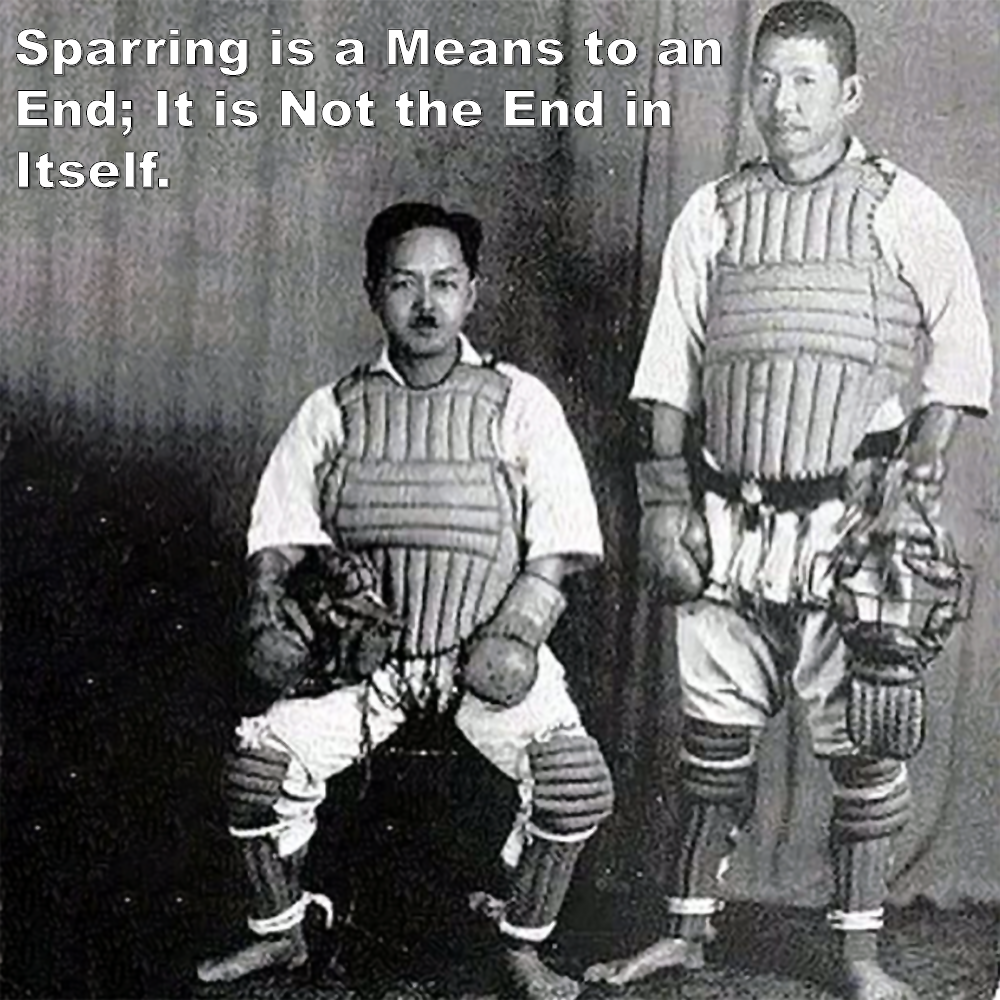
Sparring is a Means to an End; It is Not the End in Itself.
Posted by ADAM CARTER on JUL 25, 2024

Sparring is a Means to an End; It is Not the End in Itself.
(Approx 1 minute 50 second read)
No matter how realistic sparring is when you practice in the dojo, it’s never real. We always make compromises in the name of safety. If we didn’t, every training session would result in students becoming injured in some way.
Wearing safety equipment for our and our partner’s protection will always introduce a measure of unrealistic practice. It’s important to remind yourself of the reality of a real-world confrontation and keep it at the forefront of your mind.
When sparring, drilling techniques, practicing ‘bunkai,’ or any self-defense techniques, it is prudent to pressure test those techniques. In a safe dojo environment, it is easy to fall into the trap of knowing what is going to happen when exchanging techniques with a partner, trying to keep it as safe as you can. So, it is essential to add realism to your training.
Good training will give people the experience needed to perform well in the face of danger. It does not provide the actual experience of real-life danger of course. Good training can be realistic, but it’s never real. That’s as good as it can get.
Training can include stress, fear, chaos, shock, surprise, etc. Not at the level of reality, but enough to ensure you make the right decisions when faced with reality. Nevertheless, it can still help prepare people to effectively deal with violence.
The need for solid pressure testing is also key so people can learn what does and does not work for them.
Sparring can be beneficial in preparing yourself for the rigors, and more importantly, the level of stress which an actual physical confrontation presents.
There is another value to sparring which makes a great deal of sense – the person who engages in sparring will learn to overcome their fear of getting hit or injured. The fear of getting hit is instinctual. It cannot be overcome without direct experience.
In some of our practice, we find it especially useful if your training partner verbally insults and really tries to get an emotional response out of you. In other words, if you can make your body react in as close to a “flight-fight-or-freeze“ manner as possible, your training will more likely be effective in a real situation.
In my opinion, any claim that “sparring has no value” raises questions regarding being able to predict what your enemy will do in combat. Sparring doesn’t need to be like the modern competitive karate. Pushes, pulls, grabs, unbalancing, throws, etc., can all be included.
Sparring forces practitioners to be in the moment and to react to what is actually happening instead of knowing what is supposed to come next.
![]() Photo Credit: Kenwa Mabuni and a student testing protective equipment in the first part of the 20th century.
Photo Credit: Kenwa Mabuni and a student testing protective equipment in the first part of the 20th century.
